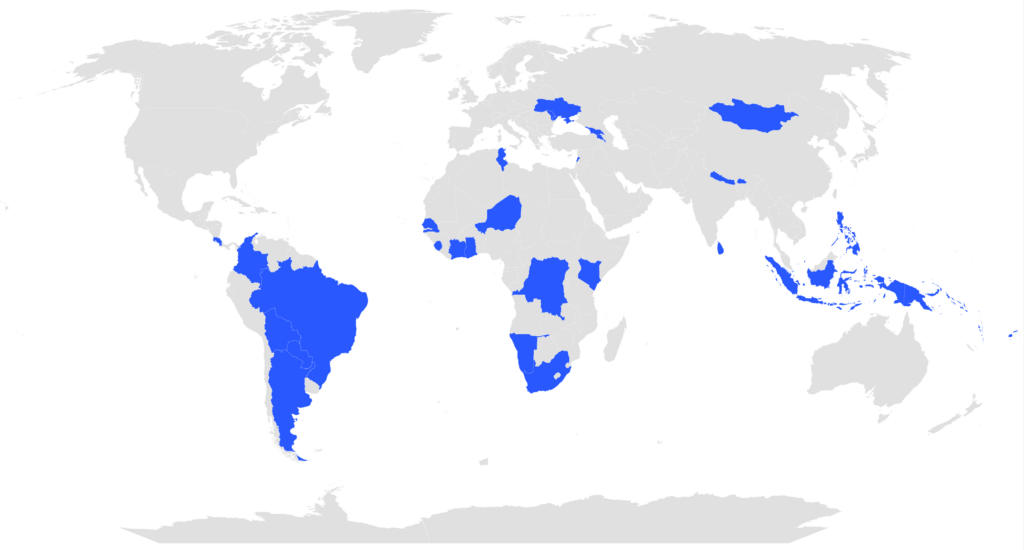Our work
The International Fund for Public Interest Media supports both individual media organizations as well as experiments and innovations at the media ecosystem level, with the goal of ensuring that public interest media have the tools and resources needed to survive and avoid capture in the short term and thrive in the long term.
Impact goals
The International Fund aims to boost the economic resilience of independent media organizations and bring about a new paradigm of sustainability for journalism. It approaches this work in three ways:
- Sustaining outlets that are both working in the public interest and in danger of extinction or capture, recognizing the value of public interest media for public participation and civic engagement.
- Supporting independent media outlets experimenting with promising innovations, including new business models, strategies for engaging diverse audiences, and emerging uses for technology.
- Fostering initiatives that seek to address structural market challenges and shape change at the national and global levels to enable media markets to function more effectively for the public interest.
In many contexts, market structures and economic environments are stacked against public interest media, and addressing the collapse of traditional business models will require systemic solutions. These solutions might include reimagining how advertising markets function, rebalancing the relationship between media outlets and digital platforms, identifying opportunities for shared resources, and exploring new funding models such as independently governed national funds for journalism and media.
The International Fund also believes that journalism needs to evolve to better serve the public. The International Fund therefore supports public interest media organizations seeking to broaden audience reach and deepen engagement with diverse audiences, with the goal of ensuring that more communities, particularly those that have been historically underrepresented in the media, can access and participate meaningfully in the creation of the news.
Geographic focus
The International Fund currently works in 40 low- and middle-income countries across its focus regions: Africa and the Middle East, Asia and the Pacific, Latin America and the Caribbean, and Eastern Europe. As the International Fund continues to scale and moves beyond its first full phase of operations, its geographic scope will expand accordingly.

Africa and Middle East: Côte d’Ivoire, Democratic Republic of Congo, Ghana, Kenya, Lebanon, Namibia, Niger, Senegal, Sierra Leone, South Africa, and Tunisia.
Asia and Pacific: Bhutan, Indonesia, Mongolia, Nepal, Pacific Islands (Federated States of Micronesia, Fiji, Kiribati, Marshall Islands, Palau, Papua New Guinea, Samoa, Solomon Islands, Tonga, Tuvalu, and Vanuatu), Philippines, Sri Lanka, and Timor Leste.
Latin America & the Caribbean: Argentina, Brazil, Bolivia, Colombia, Costa Rica, Ecuador, and Paraguay.
Eastern Europe: Armenia, Georgia, Moldova, and Ukraine.
Decentralized approach
The International Fund’s strategy and decision-making are responsive to the context and needs of the countries in which it works and informed by the expertise of those with deep knowledge of those markets.
Funding decisions are decentralized and led by regional teams with direct experience working in the International Fund’s focus regions. These regional teams engage extensively with media organizations and other sector actors to explore opportunities for grants and other interventions.
Pilot funding round
Following significant early resource mobilization and the dire need expressed by media organizations in focus regions, the International Fund announced its inaugural open call for grant proposals at World Press Freedom Day in May 2022. That call resulted in more than 200 funding applications, from which the International Fund’s first cohort of 13 grantees was selected.
Located across nine countries, these initial grantees comprise a broad diversity of organizations in terms of geography, language, editorial content, content distribution platforms, business models, and organizational maturity. The cohort is roughly evenly split across commercial, non-commercial, and hybrid business models. A majority are digital natives, publishing content primarily via their website and/or social media channels, and a little under one–third are primarily broadcast or print media.
The International Fund works closely with its grantees in gathering insights about challenges facing media organizations in its focus regions as well as promising strategies and innovations that may help those organizations to survive and then thrive.